How does the CMOS 740HD high definition camera compare to your typical reverse camera?
This week in the shop we installed a Kenwood CMOS 740HD camera into a client’s 2018 Honda CRV. We actually installed two of these bad boys. We added one as a dedicated front park assist camera and the other as a high definition reverse camera. The vehicle was already fitted with a Kenwood DMX1037s which we had previously installed.

In addition to the two cameras, we also added front and rear park assist sensors. With the new and used car market totally out of whack, upgrades like this are becoming more and more common. Although this vehicle was already equipped with a factory reverse camera, the picture quality just wasn’t up to par with todays standards. As you can see, when compared to the Kenwood CMOS 740HD, the picture quality difference is pretty remarkable.
Kenwood CMOS740HD vs Standard OEM Reverse Camera
Here is the Kenwood high definition reverse camera. This picture was taken at about 4:30 PM in late January, sun beginning to set. Note – I had not set up park guidance lines yet.
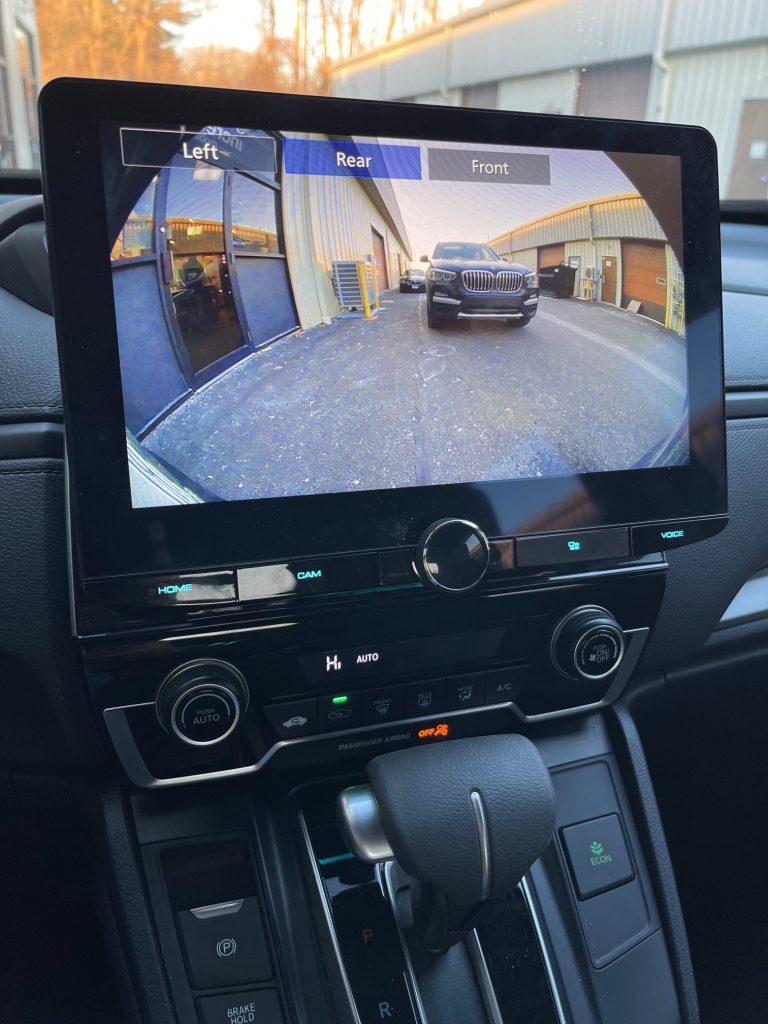
And here is the original Honda reverse camera. Yikes! We retained it as a secondary camera and labeled it “Left” because you are only alotted one “Rear” camera label in the head unit. Technically the factory camera is to the left of the CMOS 740HD so it kind of makes sense.
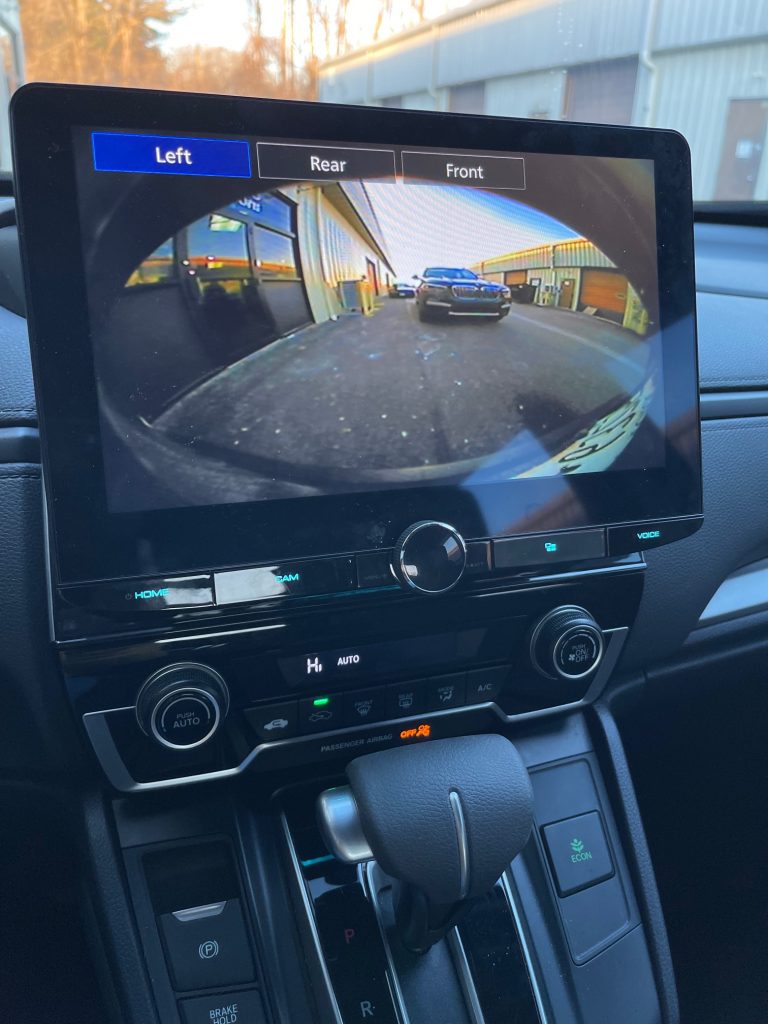
The image quality difference is tremendous. Granted part of that could be due to that fact that the Honda reverse camera was designed to operate with the original 5″ radio display. It easily gets washed out in the DMX1037S’s big, beautiful, 10.1″ high defintion display. Having said that, I can tell you from experience that the Honda camera is pretty darn close to what you get with any entry level aftermarket reverse camera. Sure – you can see if there is a person, car or object in your path, but not in very high definition. It works, but it could be much better and the Kenwood CMOS 740HD is that much better.
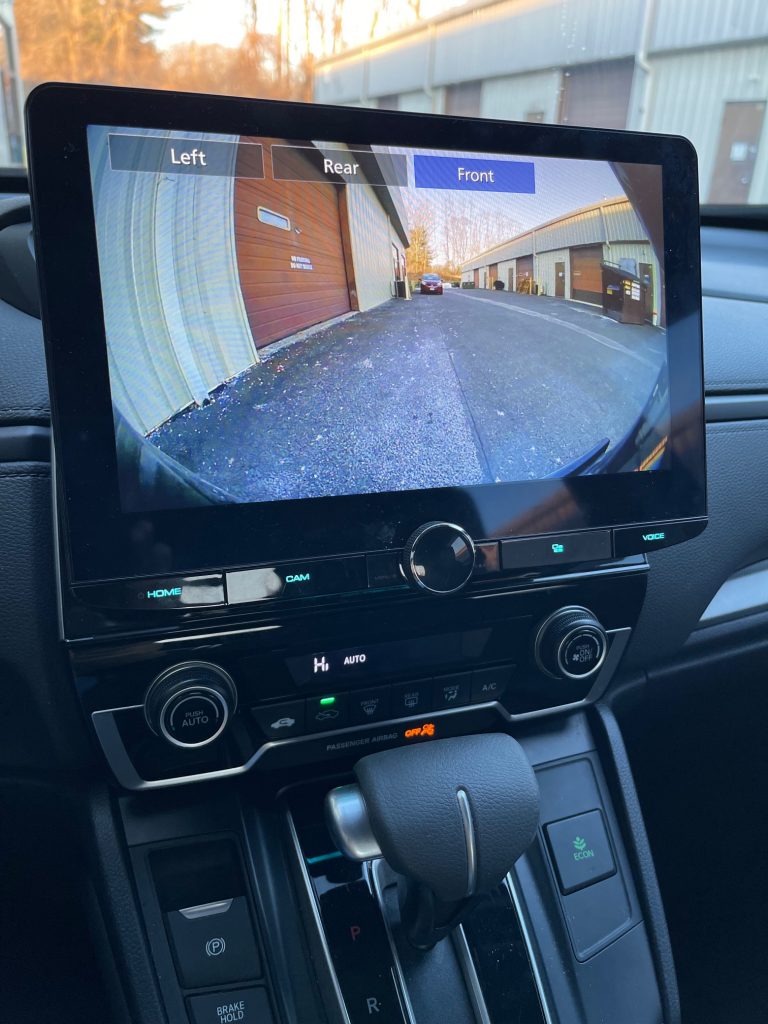
CMOS 740HD Front Camera Activation
The other added perk in this install is the front camera is activated automatically when you shift from reverse to drive. This feature is typically supported when used with any iDatalink Maestro compatible vehicle and iDatalink Maestro RR or R2. Alternatively, there is also an easy camera shortcut button on the face of the radio. Simply tap that and select which view you want to see.
CMOS 740HD – Compatible with Select Kenwood Models
The only snag about this high definition park assist camera is it only works with a few select Kenwood models. Before you go out and buy one, make sure you have one of these compatible models:
- DMX957XR – eXcelon series mechless 7″ double din
- DDX9907XR – eXcelon series with CD 7″ double din
- DNX997XR – eXcelon series with CD/Garmin GPS double din
- DMX1037s – Regular Kenwood series 10.1″ floating screen
- DMX1057XR – eXcelon series 10.1″ floating screen
- DNR1007XR – eXcelon series 10.1″ floating screen with Garmin GPS
Each one of these head units features a high resolution capacitive touch screen with 1280 x 720 display. That translates to a 2,764,800 total pixel count. Compare that to your typical aftermarket head unit which is usally equipped with a 1,152,000 pixel count and 800 x 480 display. That’s a lot more saturation and clarity if you put it to good use. Like anything else – garbage in equals garbage out. So why not use a high definition camera with your high definition display?
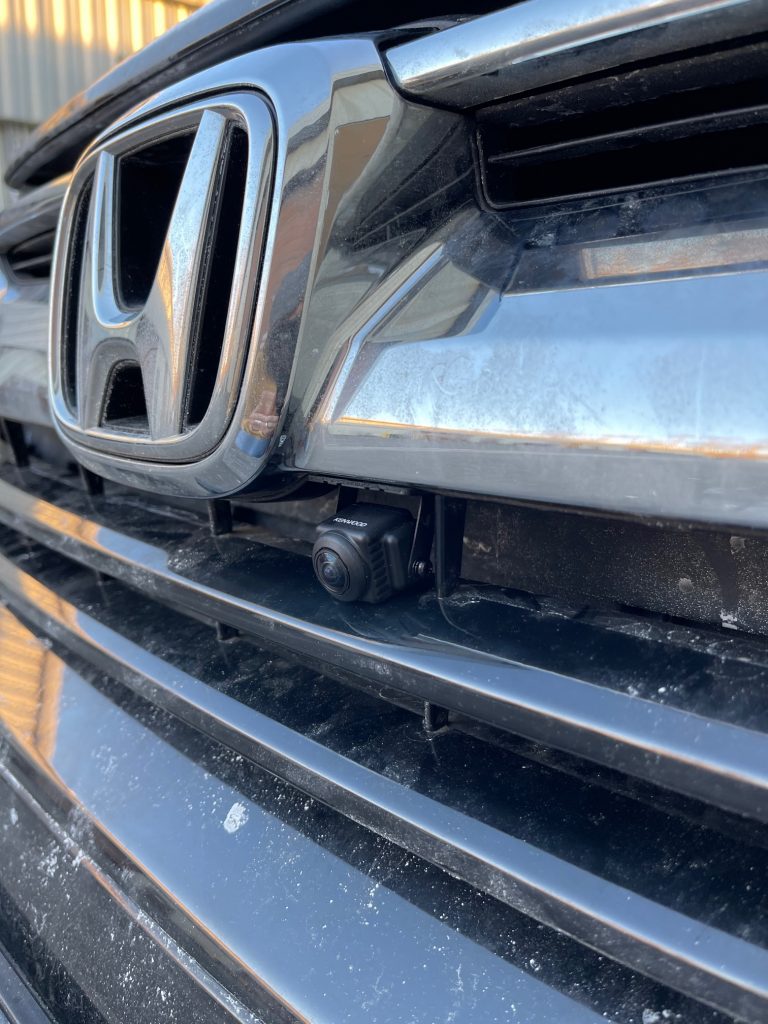
After seeing the difference in quality, I don’t think I can use any other type of camera. It’s a shame it’s only compatible with a few select models. It may finally be time to upgrade my old DMX7704s just to get the Kenwood CMOS 740HD camera. If you’re interested in a high definition reverse or front park assist camera for your vehicle, contact us today to learn more.



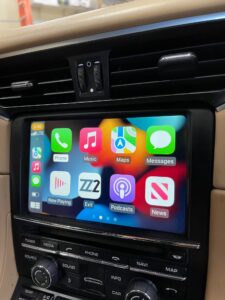
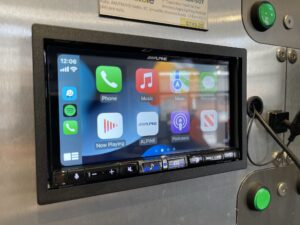
18 Comments
Hi Annie
I have a similar setup with two CMOS-740HD cameras and a DRV-N520 dash cam. The quality is awesome on these cameras definitely one of the best on the market.
I have a small issue where the the front installed CMOS-740HD has the image inverted. I can see you are not suffering from this issue. How did you invert the image so it would display correctly?
Hi Travis, thanks for the comment! This is by far my favorite camera. I remember being stumped by this initially and I think I eventually found the setting somewhere under the advanced camera assignment settings. If I recall correctly, once I labeled it as a front camera in settings, I cycled ignition and the image was correct. Do you have it labeled as a front camera in the camera assignment settings?
Hi Annie
I’m pretty sure I’ve got it assigned as the front camera. I’ll try reassign it as front camera and see how it goes. Thanks for the help.
I believe there are only 2 HD inputs on the DMX957 and 958. How did you get HD image quality on both 740 cameras + the 520?
I think it’s in the camera assignment menu. The playback on the 520 on the display is like a quick play file, I don’t believe it’s HD quality for the quick playback. Also I’m surprised to hear you had low light issues on the 740HD. I’ll have to test ours on display next to our Rydeen CM-HD4 at night with the showroom lights off and see what happens. Have not had any complaints from clients. I did have one issue in one vehicle due to placement where we had to tint one of the license plate light lenses on the car as that was interfering with the picture quality. But that’s because the license plate light was RIGHT next to the camera, there was no other great place to put it.
Hi Annie,
I just Installed the 1037s in my ford transit connect van with the data link RR. For some reason, my factory rear view camera doesn’t display. It’s wired up. Any Suggestions? Thanks
Hi Rodney, this is a bit of a delayed response – not sure if you got figured out, there’s a few things that could be going on. The Maestro should be outputting reverse – is the Kenwood switching over, but no picture? Make sure rear camera is turned on in the Kenwood camera settings. If it is and it’s not switching over, you may need to grab reverse trigger. We’ve run into that where it was technically supported by the Maestro, but wasn’t outputting reverse trigger consistently (in a 2019 VW Jetta most recently). Also, sometimes you need an iDatalink ACC-VID1 adapter – not sure if you grabbed one, I do see it listed for the Transit Connect.
Hi Annie,
Do you know of any Kenwood that will fit in a 2022 CRV Hybrid? I am looking to add a front camera, better rear camera and better head unit.
Hi Jason, great question, but I don’t think so. I’m assuming that model has the touch screen radio and factory blind spot camera too? I’ve only been able to do this upgrade in models that have the basic non touch screen radio like an LX trim. Anything above that, we don’t have solutions to retain the data flowing the stereo and keep both the blind spot and reverse camera (or you may even have a 360 camera for that matter). Maybe in the future we’ll see something from iDatalink to retain that.
Will this camera work in an Alpine ILX-F511?
No – as noted above the CMOS-740HD only works with DMX957XR, DDX9907XR, DNX997XR, DMX1037s, DMX1057XR, DNR1007XR and also the new DMX958XR. Alpine also has their own version which you can see in this instagram post compared against the Kenwood or this YouTube video.
Annie I actually have this the n520 and a dmx 1037s. I don’t know if you noticed but in the camera selection settings if you choose hd it won’t display video. Only ntsc displays video.
Hi Doug. I think that’s in reference to the DVR footage from your 520N which is designed to work with any of the Kenwood’s with 4 camera inputs, even in models that don’t support the CMOS-740HD camera like the DMX9707s. Although the DRV-N520 can record in HD, I think the playback feature through the head unit is like quick playback file and for the full HD you have to download it from the SD card. Just guessing on that one as my Blackvue dash camera has a similar function. Also this from Kenwood’s website kind of backs up that theory, “KENWOOD Drive Reviewer is a PC application that displays video recorded by the DRV-N520 with greater detail.” Totally guessing though, I’d have to reach out to Kenwood to verify.
It’s a true shame that the Kenwood headunits only have composite inputs for these cameras….which negates the entire “hd” camera. 480 is the max. Not HD.
That’s a huge point missing in your article. Huge.
Hi Doug, you do bring up a great question. That isn’t quite the case with this camera, but I can see why it would seem that way. Although the compatible Kenwood receivers only have a composite input, the camera and receiver are utilizing HD-TVI technology to create the HD picture. This technology has been around in surveillance system market since 2014. It stands for high definition transport video interface. It was developed as a way for people to upgrade their existing surveillance cameras to high definition cameras without having to change out all their existing cabling and infrastructure in the process. Although HD-TVI technology is capable of up to 1080P, the CMOS-740HD provides 720p picture quality. Only the select receivers mentioned in this article have the HD-TVI tech built in which is why if you try and connect this camera to another receiver via composite connector, it will not work. They don’t have the HD-TVI tech built in to decode it. I hope that helps clear up any confusion on how the HD picture is achieved. Thanks for the comment!
Sounds worthy of it’s own article!
Ha! You’re right and I should have that info included in the post. I will update and add a pic of the cabling soon 😉
There are aftermarket TVI Backup cameras on the market now that are much less expensive than the 740HD. While the daytime image quality of the HD740 is fantastic the night time usage however has been worthless in my car and the light pickup compared to even a cheap $35 Amazon camera was worse. The minimum LUX rating unfortunately is 1.0 and that cannot pickup hardly any light at night.
Many of these new aftermarket cameras state they support 0.01 or 0.1 LUX with a TVI interface over composite. I’m going to buy the DMX958XR and try these cameras to see if this will work.
https://www.amazon.com/gp/product/B0B92XDWYZ/ref=ewc_pr_img_6?smid=A1AUG8YBJBHYLG&psc=1